|
Nelis' Dutch Village in Holland U.S.A.
The story of Nelis' Dutch Village began in Beverwijk Nederland in 1910, when Frederick Nelis asked his son Harry, who was 17 years at the time, to travel to America and search for some rich farm land. World War I was just over the horizon, and times were tough all over Europe. The Nelis family was hoping to make a new start in the "land of opportunity."
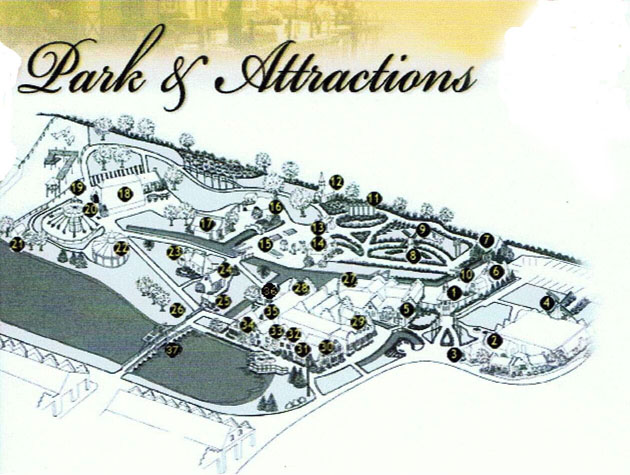
Plan of Nelis' Dutch Village in Holland Michigan. It includes buildings of authentic Dutch architecture, brick walkways, canals, gardens in special presentations depicting life in a typical village in the Netherlands. Your visit to this village, called Noordhuizen, brings history to life in a fun and friendly way. For attractions see site of Nelis' Dutch Village http://www.dutchvillage.com
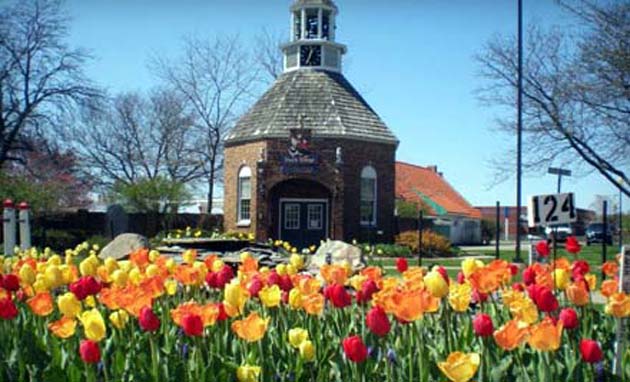
Entrance to the park, with Carillon Bell Tower
Young Harry departed on the s.s. Noordam in October of 1910, three weeks later he arrived at Ellis Island at the coast of New York, the mainport for most of the immigrants to the U.S.A. Following his father's instructions, he traveled to Misourri, purchased land and began to grow vegetables. In September of 1911, the rest of the Nelis' family, which included 11 brothers and sisters, ranging in age from 6 months to 16 years joined brother Harry.
Growing vegetables proved to be unprofitable, so the family moved to Chicago in search of more opportunities. After working at various jobs for a few years, they heard about a settlement in Holland Michigan and decided to visit the young Dutch community. Upon arriving, they were impressed with the beauty of the area and decided to purchase 80 acres of land just north of the town.
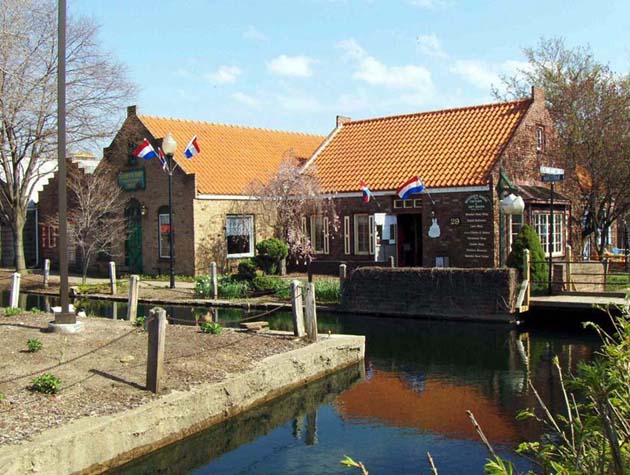
A typical sight reminds to the province Noord Holland in the Netherlands.
In the early years, the Nelis family grew vegetables to sell their products locally, also they made frequently trips to the Chicago markets. During the Depression when markets broke down, the family switched from horticulture to the nusery business. Not long after being in this trade, a cousin in the Netherlands asked Frederick to plant daffodills, since he had run out of planting space in the "old country."
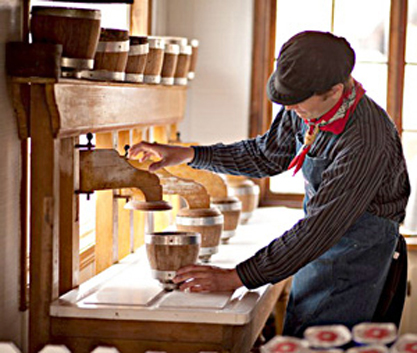
The making of deliscious Dutch cheese in a traditional way
That arragement dramatically changed life for the Nelis' family. They grew daffodills for a few years, but soon after they began to plant crops of tulips. By the late 1930's the tulip farm become a "hot spot," for tourist flocking to Holland for the new Tulip Time Festival, which grew out to an annually festival untill today, attracting millions of people. As time passed the tulip farm became increasingly popular and a large windmill and souvenir shop were added to the Nelis' market. Soon Holland souvenirs were as popular as the tulip bulbs.
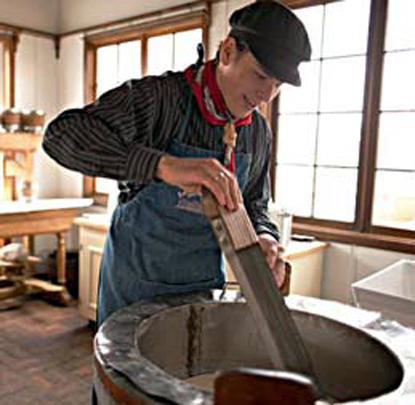
The making of deliscious Dutch cheese in a traditional way
The present location of Nelis' Dutch Village was purchased in 1952, first it began as a retail for bulbs and souvenirs. The 40 acres were situated on a small two-lane road, which would later become US 31. At this time, Harry Sr.'s two sons, Fred and Harry Jr. joined the family company. Harry Jr. who had just returned from Naval duty in 1958 at the age of 24, and his older brother Fred recognised opportunities in building the first village houses, what would become the start of Nelis' Dutch Village, also called as Noordhuizen after the herritage of the family. The first year of the Village, many visitors travelling north stopped at the new Dutch market when they heard where tulip bulbs were to buy.
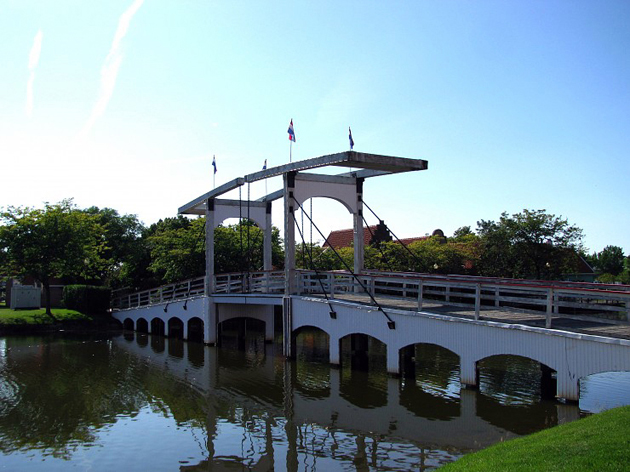
A reproduction of "De Magere Brug van Amsterdam. (The Skinny Bridge of Amsterdam)
The next year, claver as the brothers were to offer drinks and Dutch specialty foods, while costumers could shop, an Old-Dutch styled café was added. Every time in off-season a new building or attraction was build, so the expansion of the Village became a touristical attraction overpassing local importance. And even more, a wholesale division in the 70's for imported Dutch goods distributing nationwide, while in the 90's by internet a mail order department did business expand internationally.
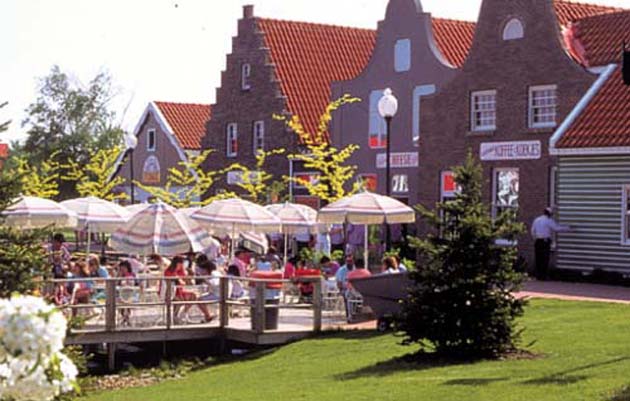
For a drink or a snack The Hungry Dutchman café, welcomes all guests
Currently there are more than 30 structures in the Dutch Village, with architecture representing different provinces of the Netherlands, mainly wellknown reproducted brickwork houses in style of Holland en Zeeland. Beside you will find workshops for making cheese, wooden shoes. Outlets for selling chocolate, candies, cookies and other Dutch food specialities, who are popular among American costumers.
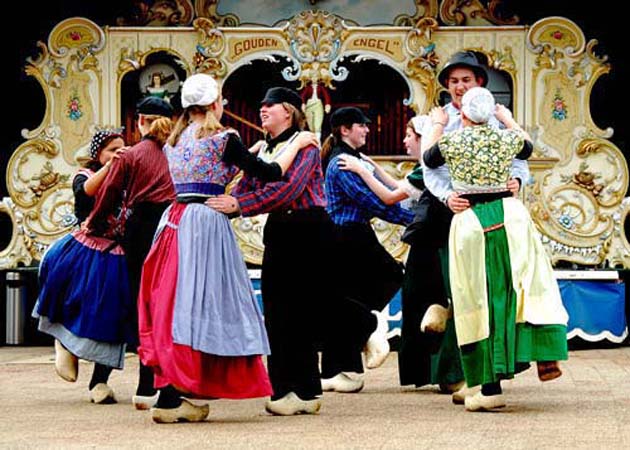
Street Organ De Gouden Engel (The Golden Angel)
Never a dull moment in the park. Dancing groups perform Old Dutch dances in costumes of different regions of the Netherlands. Each province and even a part of it, have by tradition or history a variation of dresses. Women are most colourfull dressed with beautyfull garments, which are difficult to obtain today, because these fabrics are made by a very small number of manufacters.
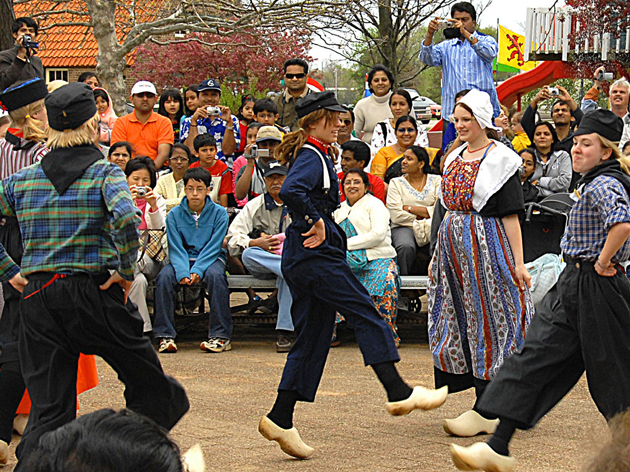
The Wooden shoe dance as an attraction (Klompendans)
The costumes are never ready-made to buy, women make their clothes themselves, complicated in form and sewing methods. By jewelry or special forms of caps you can see, weither the woman is a member of a protestant or catholic church, or she is married or might be still available for engagement. When a close member of the family dies, the women wears a mourningdress, all in black. Even her jewelry is mimimized to a black necklace. The period of mourning last for the loss of a father or mother at least one year. For others in the family is a half years of mourning, normally the standard.
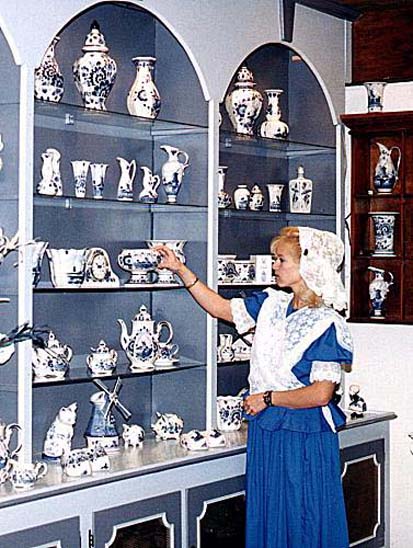
In one of the souvenirshop you can buy original Delft Blue, always a gadget
A day at the park is for children always fun. At the mini-farm they can ride a pony, there is a interactive workshop, a cinema, children rides, an Ice cream parlour, street organs specially imported from Holland, where you can enjoy the sound of a complete mechanical orchestra. The fairytail of Pieter who saved Holland for floods by holding his finger into the dyke, is a never missing item for tourists.
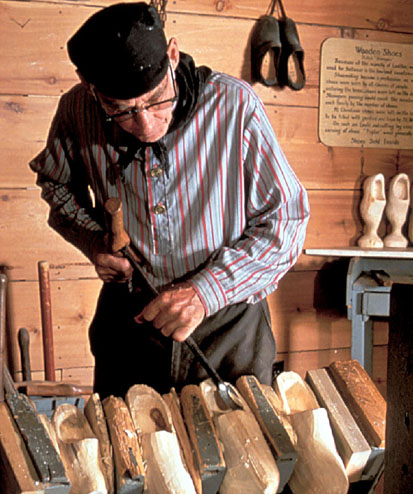
Making wooden shoe's by hand is hard and specialised artcraft
The times I travelled to America, no greater pleasure I could present my friends by bringing chocolate, pepermunt, stroopwafels, or Zeeuwse boterbabbelaars. Sigars are nowadays out of favour, though the quality is superb. A piece of Delft blue opens doors where you wouldn't expect. It's nice to give a welcome gift to a friend.
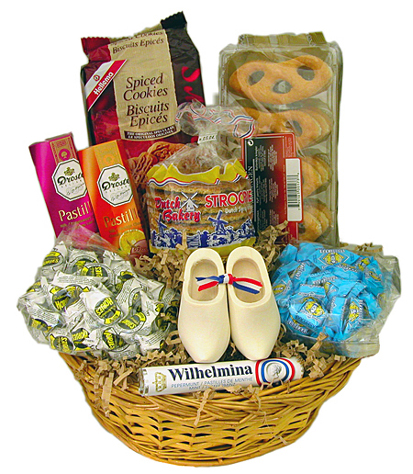
Typical Dutch candies and cookies, popular all over the world.
Every country is wellknown by its speciality; Belgium by all kinds of high quality beer, of which is spoken as it is a delicate sort of wine, what's truly right. Germany is recognized by beer also, but even so by "Frankfurter Wurst," and "Schwartzwalder drindln," though its a stereotyped image, just as pizza belongs to Italians and croissant-bread to the France, what's not true.
And the Dutch's? What do they like the most....?.... Everything that can be sold!! Trade marks as Droste Pastilles, Heineken Beer, Hopjes, Delft Blue or Tulip Bulbs are worldwide associated with Holland. At the shop of Nelis you will find all those Dutch delicious quality food stuff. Do you feel home-sick? Help yourself to cure of it, go to Nelis.
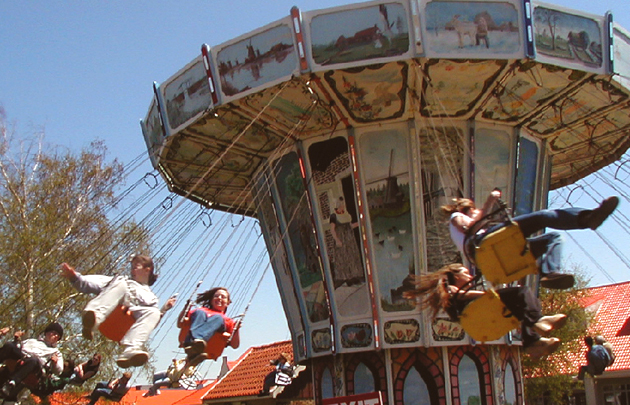
A real Dutch Swing Ride, specially imported from Holland
Kermis, or Funfair in English, is by origin an annual-mass on devotionday of the patron of a village or city. Kermis is a degenaration of the word "Kerkmis or Kerke-misse." On that day, people flocked together to devote the saint patron in proccession to the church, afterwards finding amusement at the marketplace. Still, there is a connection with this religious festival and a procession in small villages.
From that time on, all kinds of pleasure was offered by the "spullenbaas, or foorkramer," respectively called in Dutch and Flamish. A "Draaimolen, a Zweefcaroussel, a Bootschommel," childern spent all there saved money on a thrilling ride. Bagging grantmothers, fathers, mothers and aunts for more "centjes."
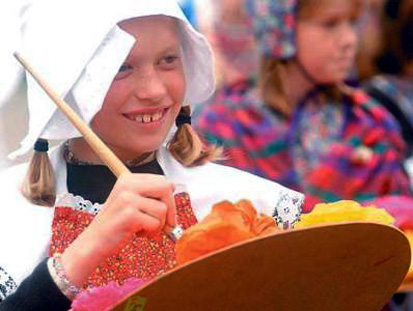
Children's interactive workshop
Servicepoint;
© 2011 Albert Prins

|

